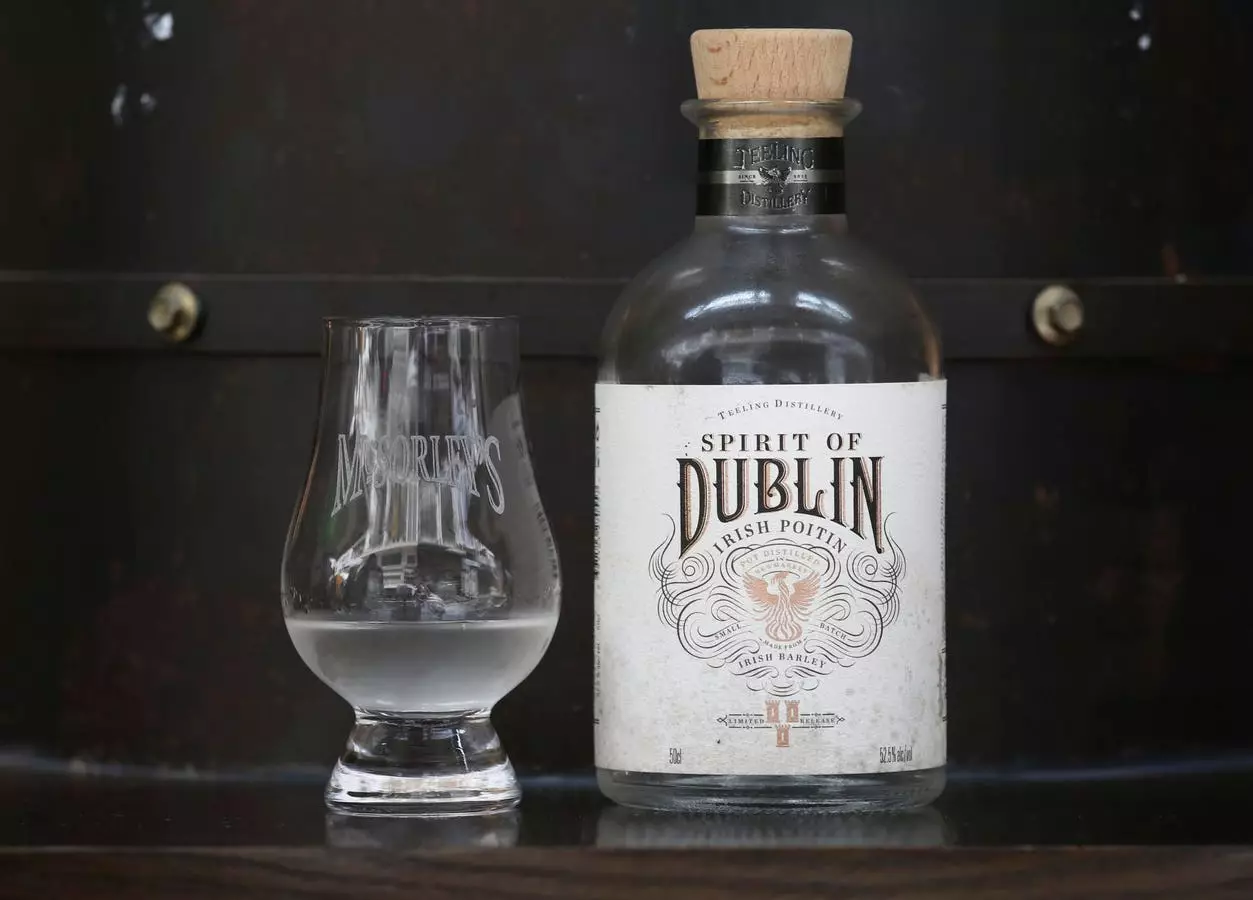Poitín, often referred to as Irish moonshine, has experienced a renaissance after centuries of being overshadowed by more mainstream spirits like Guinness and Irish whiskey. For over 300 years, this potent drink was illegal in Ireland, creating a rich tapestry of stories and underground production methods that have shaped its unique nature. Originally distilled from a variety of ingredients—sometimes as simple as malted barley or as exotic as crab apples—poitín played a significant role in the lives of rural Irish families who produced it in their own homes, from pot stills nestled in kitchens and garden sheds.
The name ‘poitín’ itself comes from the Gaelic term meaning “little pot,” reflecting its humble origins. This spirit claims the title of Ireland’s original “uisce beatha,” or “water of life,” giving it a revered status that predates the more popular whiskey. Its embedded history is intertwined with stories of defiance against British colonialism, as the spirit thrived in the face of bans, showcasing Ireland’s resilient culture.
The British prohibition of poitín in the 17th century stemmed from the inability to tax what was often seen as an illicit pastime. This ban catalyzed the underground production of poitín, transforming it into a symbol of rebellion while allowing rural communities to maintain their independence through clandestine distilling practices. While much of the spirit produced during this era was considered subpar, some distillers refined their methods, creating batches that were smooth and complex.
The lifting of the ban in 1997 marked a turning point for poitín, yet it wasn’t until a couple of decades later that distilleries began to embrace this traditional spirit fully. The misconceptions surrounding poitín persisted—a stigma that compared it to dangerous illicit brews, leading many consumers to avoid it altogether. With an air of danger surrounding it, poitín was seen more as a punchline than a potential premium spirit.
In recent years, a fresh wave of distilleries has taken on the challenge of reviving poitín, elevating it from its rough craft roots into a respected player within the spirits market. This new era of distillation emphasizes quality, flavor profiles, and a rich understanding of the historical significance of poitín. The same independent spirit that fueled its underground popularity now serves as the backbone for a movement that seeks to reintroduce it to consumers as a sophisticated option alongside whiskey and gin.
Many new brands, such as Mad March Hare Poitín, Bán, and Glendalough Mountain Strength Poitín, have emerged, aiming to reshape perceptions of this historic drink. Bartenders and mixologists have embraced poitín in their cocktail creations, integrating it into innovative drinks that reflect both traditional Irish elements and contemporary trends. These developments suggest that poitín is not just a passing trend, but rather a spirit with staying power.
The embrace of poitín by the Irish bartending community has been nothing short of enthusiastic. Pubs and cocktail bars across Ireland are now showcasing this unique spirit, manifesting in an array of inventive cocktails. For example, the Banshee—a tiki-inspired cocktail combining Micil Poitín with whiskey, honey liqueur, and various fruit flavors—has emerged as a popular choice, illustrating how this once-misunderstood spirit is being creatively incorporated into mixology.
Bar1661, a notable establishment, has become a leader in educating patrons about poitín through tasting flights and cocktails that pay homage to the spirit’s rich heritage. Additionally, the evolution of flavors has been celebrated with cocktails like Belfast Coffee—a modern twist on Irish Coffee using Bán Poitín, cold brew, and cream, pushing the boundaries of what poitín can offer.
As poitín continues to gain momentum, many are left wondering what the future holds for this storied spirit. It stands at a crossroads where tradition and modernity meet, and consumer interest is piqued by its unique history and cultural significance. With each new batch that comes to market, whether enjoyed in the pubs of Dublin or at home, poitín is stepping out of the shadows of its past and into a promising future as a premium spirit that is as rich in flavor and history as it is in storytelling.
As more people discover its depths and versatility, poitín is poised not just to remain a part of the Irish spirit landscape, but to thrive and flourish in the global spirits scene. Surely, visitors to Ireland and spirit enthusiasts alike will find their curiosity piqued, fostering a new appreciation for the ‘water of life’ that is poitín.


Leave a Reply